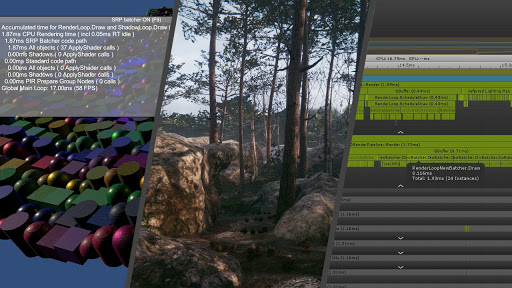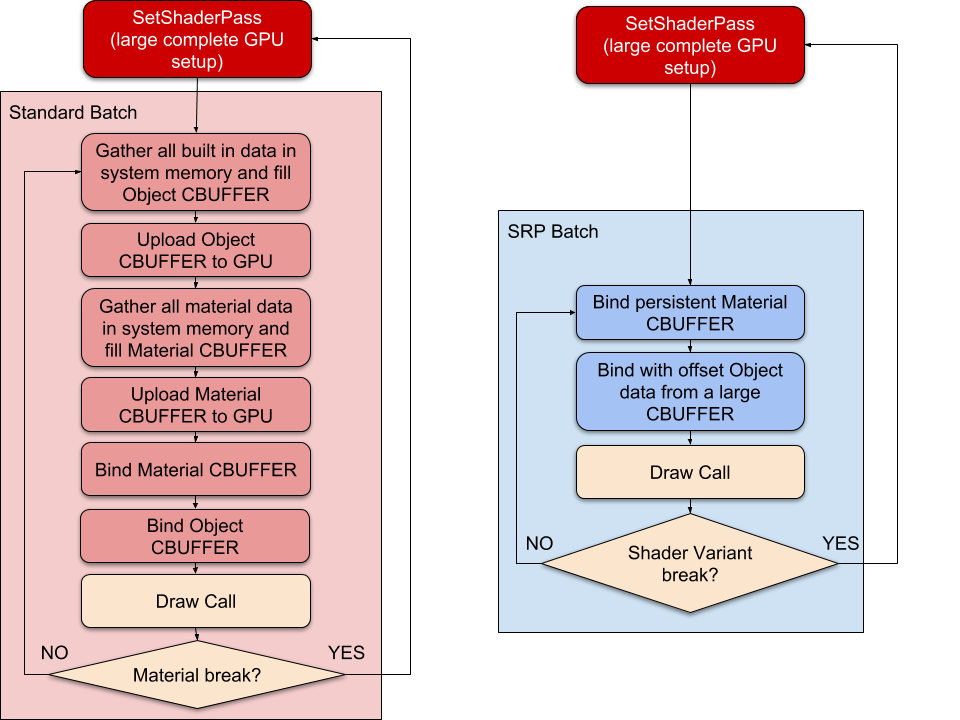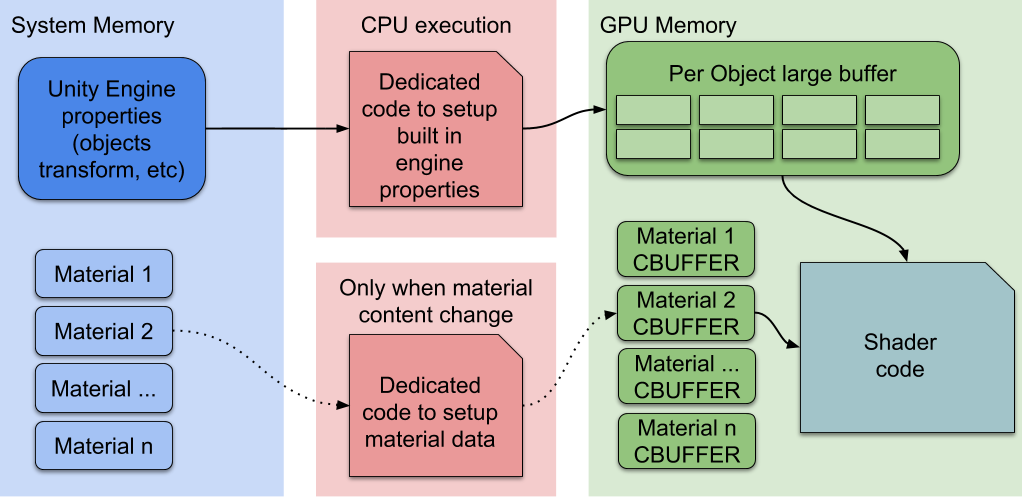Scriptable Render Pipeline Batcher in URP
The Scriptable Render PipelineA series of operations that take the contents of a Scene, and displays them on a screen. Unity lets you choose from pre-built render pipelines, or write your own. More info
See in Glossary (SRP) Batcher is a draw call optimization that significantly improves performance for applications that use an SRP. The SRP Batcher reduces the CPU time Unity requires to prepare and dispatch draw calls for materials that use the same shaderA program that runs on the GPU. More info
See in Glossary variant.

Requirements and compatibility
This section includes information about the render pipeline compatibility of the SRP Batcher.
Render pipeline compatibility
| Feature | Universal Render Pipeline (URP) | High Definition Render Pipeline (HDRP) | Custom Scriptable Render Pipeline (SRP) | Built-in Render Pipeline |
|---|---|---|---|---|
| SRP Batcher | Yes | Yes | Yes | No |
How the SRP Batcher works
The traditional way to optimize draw calls is to reduce the number of them. Instead, the SRP Batcher reduces render-state changes between draw calls. To do this, the SRP Batcher combines a sequence of bind and draw GPU commands. Each sequence of commands is called an SRP batch.

To achieve optimal performance for your rendering, each SRP batch should contain as many bind and draw commands as possible. To achieve this, use as few shader variants as possible. You can still use as many different materials with the same shader as you want.
When Unity detects a new material during the render loop, the CPU collects all properties and binds them to the GPU in constant buffers. The number of GPU buffers depends on how the shader declares its constant buffers.
The SRP Batcher is a low-level render loop that makes material data persist in GPU memory. If the material content doesn’t change, theSRP Batcher doesn’t make any render-state changes. Instead, the SRP Batcher uses a dedicated code path to update the Unity Engine properties in a large GPU buffer, like this:

Here, the CPU only handles the Unity Engine properties, labeled Per Object large buffer in the above diagram. All materials have persistent constant buffers located in GPU memory, which are ready to use. This speeds up rendering because:
- All material content now persists in GPU memory.
- Dedicated code manages a large per-object GPU constant buffer for all per-object properties.